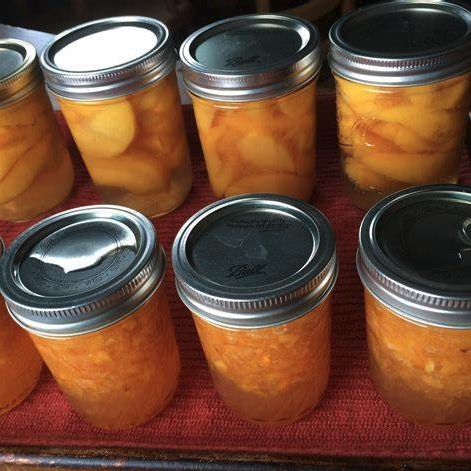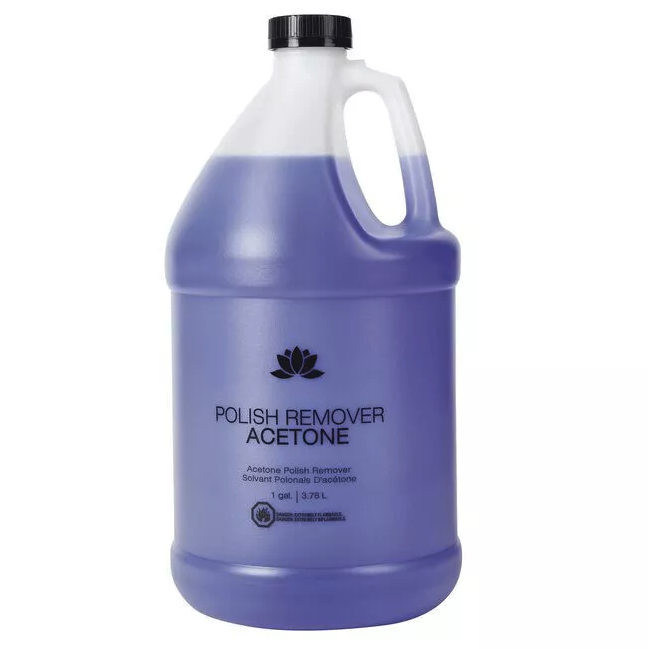Ever since the transatlantic aircraft plot in 2006, the Transportation Security Administration (TSA) has been enforcing what is known as “3-1-1 for carry-ons,” wherein travelers are allowed to carry liquids through security checkpoints in containers of 3.4 ounces (100 mL) or less that fit comfortably in one quart-size clear plastic zip-top bag.
Some liquids, more than 3.4 ounces, can be taken in your carry-on bag. But most liquids can only be brought in checked luggage. So, let’s say you have a gallon of your grandmother’s turkey gravy, or a few jars of her amazeballs homemade peach preserves that you want to bring on the plane. That’s fine, as long as it is in checked luggage.

From www.TSA.com:


That being said, the FAA places limits on some liquids that are allowed in checked baggage. These include restricted medicinal and toiletry items, including aerosols.
Why?
Although Grandma’s gravy or peach preserves aren’t a threat, some of the items passengers may pack in their checked bags may be considered dangerous goods, also known as hazardous material. The FAA forbids most dangerous goods in both carry-on and checked baggage.
That being said, there are a few exceptions for some personal items, such as toiletries, medicines, and assistive devices. These include hairspray, hand sanitizers, aerosols, perfumes, colognes, rubbing alcohol, inhalers, nail polish and remover, sunscreen, shaving cream, certain medications, etc.

The limits
The FAA says that the total aggregate quantity of these types of items, per person, cannot exceed 2 kg (70 ounces) or 2 L (68 fluid ounces). The capacity of each container must not exceed 0.5 kg (18 ounces) or 500 ml (17 fluid ounces).
This also includes medicinal and toiletry articles in aerosol canisters. Aerosol release devices (button/nozzle) must be protected by caps or other suitable means to prevent accidental release.
Furthermore, flammable aerosols that don’t qualify as medicinal or toiletry articles are forbidden in both carry-on and checked baggage. Examples of non-toiletry flammable aerosols include cooking spray, WD-40, spray paint, etc. Nonflammable aerosols (with no other hazard) that don’t qualify for the medicinal/toiletry article exception may be carried in both carry-on (if 3.4 oz. or smaller) and checked baggage, as long as the aerosol release devices are protected with a cap or other means to prevent accidental release
The FAA’s rules can be found here.
How do you know?
OK, so the FAA is mainly talking about medicines and toiletries. How do you know what they count as that? They say that if it does not touch your body when you use it, then it likely does not qualify for the medicinal and toiletry article exception.
What about the TSA?
The TSA also has its own rules on “prohibited items” that pose a security threat. Though they sometimes overlap, the TSA security rules are separate from the FAA’s dangerous goods safety rules.
Of course, most people wouldn’t travel with, say, 2 gallons of hand sanitizer or 50 1.5-oz bottles of perfume. But if you’re considering transporting more than 70 ounces of these hazardous liquids that count as toiletry or medicinal items, it’s probably best to plan another method to get them from Point A to Point B.
Want to comment on this post? Great! Read this first to help ensure it gets approved.
Want to sponsor a post, write something for Your Mileage May Vary, or put ads on our site? Click here for more info.
Like this post? Please share it! We have plenty more just like it and would love it if you decided to hang around and sign up to get emailed notifications of when we post.
Whether you’ve read our articles before or this is the first time you’re stopping by, we’re really glad you’re here and hope you come back to visit again!
This post first appeared on Your Mileage May Vary
